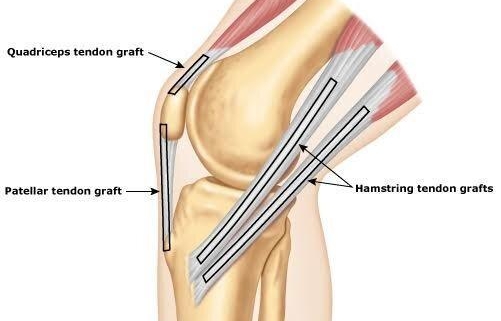ACL Hamstring Tendon Graft Reconstruction

Overview
ACL Hamstring Tendon Graft Reconstruction is a common surgical procedure for those who have suffered a tear in the Anterior Cruciate Ligament (ACL), a major ligament in the knee. The surgery involves using a piece of the hamstring tendon to replace the torn ACL. Coming under the broad banner of orthopedic surgeries, this procedure is relatively frequent with approximately 200,000 ACL surgeries performed in the United States alone each year.
Types
There are no specific subtypes of ACL Hamstring Tendon Graft Reconstruction. However, the surgical procedure can vary based on the individual patient’s condition. Variations may include the use of autografts (tendon taken from the patient) or allografts (tendon taken from a donor), the type of surgical tools and techniques employed, and the post-operative treatment approach.
Causes
ACL injuries, leading to this kind of surgery, often occur due to sudden, abrupt movements, such as sharp changes in direction, sudden stops, or direct collisions. This is common in athletes who participate in high-impact sports like football, basketball, skiing, and soccer.
Symptoms
When an ACL injury occurs, patients may likely experience a ‘popping’ sensation in the knee, severe pain, rapid swelling, loss of range of motion, and instability or a ‘giving way’ feeling when bearing weight on the leg.
Diagnosis
Doctors usually diagnose an ACL injury through a combination of physical examination, medical history, and imaging tests. During the physical exam, the doctor checks your knee for swelling and tenderness. Imaging tests, such as X-rays, MRI scans, and ultrasound, help confirm the diagnosis and assess the extent of the injury.
Treatment Options
ACL injuries can be initially treated conservatively with rest, ice, compression, and elevation (RICE). However, for more severe injuries or for patients who wish to maintain a high level of physical activity or sport, ACL Hamstring Tendon Graft Reconstruction may be recommended. Rehabilitation and physiotherapy, before and after surgery, play a crucial part in the treatment process to regain full knee strength and function.
Living With ACL Hamstring Tendon Graft Reconstruction
After the surgery, patience and commitment to rehabilitation are key factors to a successful outcome. Initially, expect to use crutches for a couple of weeks, and also knee braces as directed by your physiotherapist or surgeon. Exercise routine as advised by the physiotherapist helps regain muscle strength and range of motion. Pain medications prescribed by the doctor will help manage post-operative discomfort. It is also essential that patients abstain from high-impact activities till the knee heals completely- this can take several months.
When to Seek Help
After the surgery, it is crucial to consult your doctor immediately if you notice any signs of infection such as fever, increased pain, redness, swelling, or pus in the surgical wound. An injury or heavy impact to the operated knee or problems with physiotherapy should also be reported to the healthcare provider promptly.
Remember, being well-informed and following your healthcare provider’s instructions are vital steps to a successful ACL Hamstring Tendon Graft Reconstruction and recovery.
